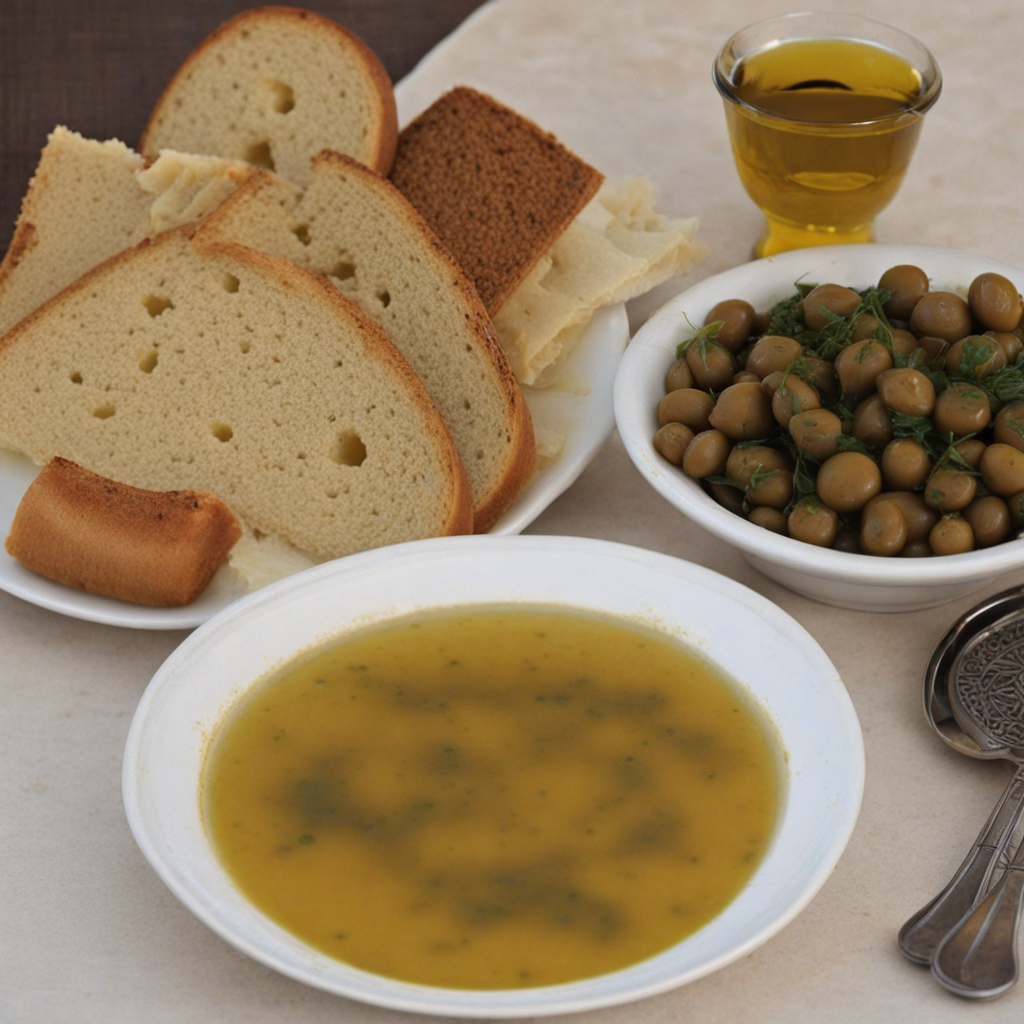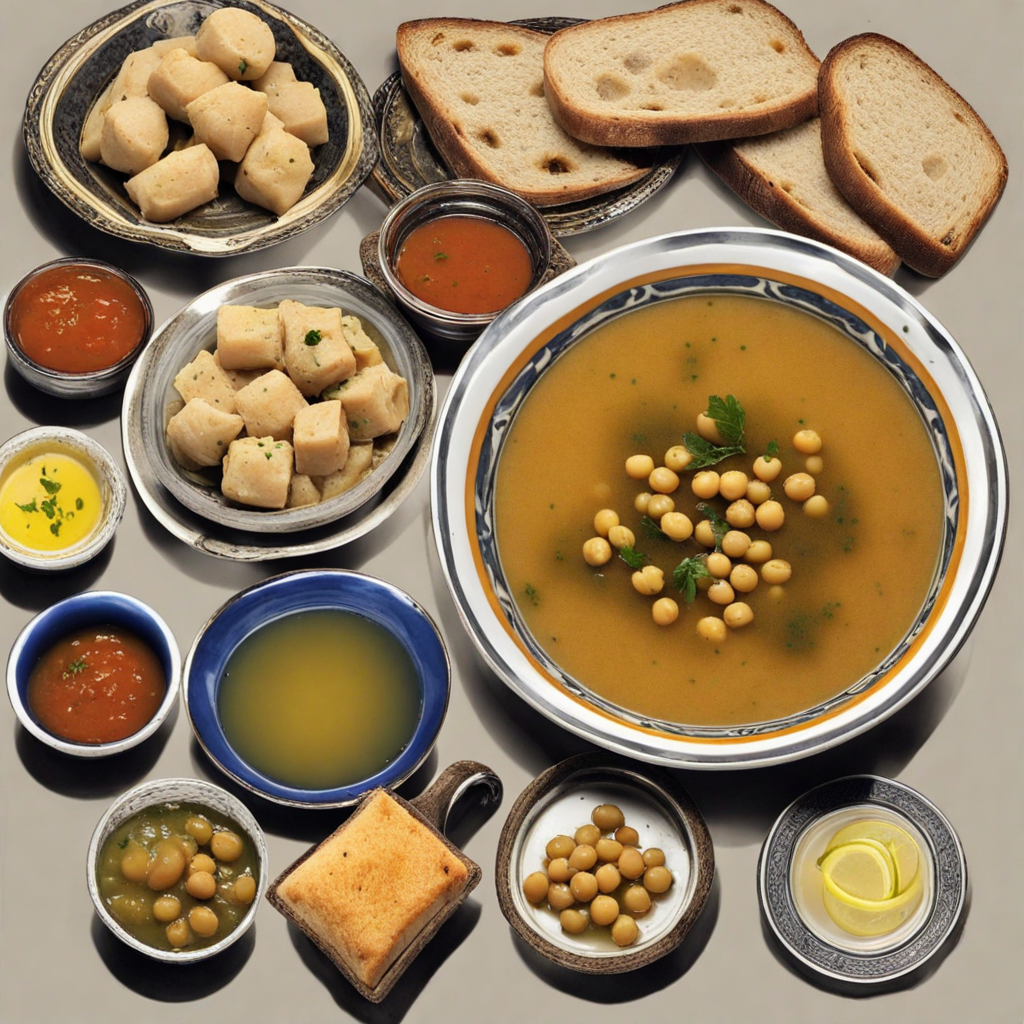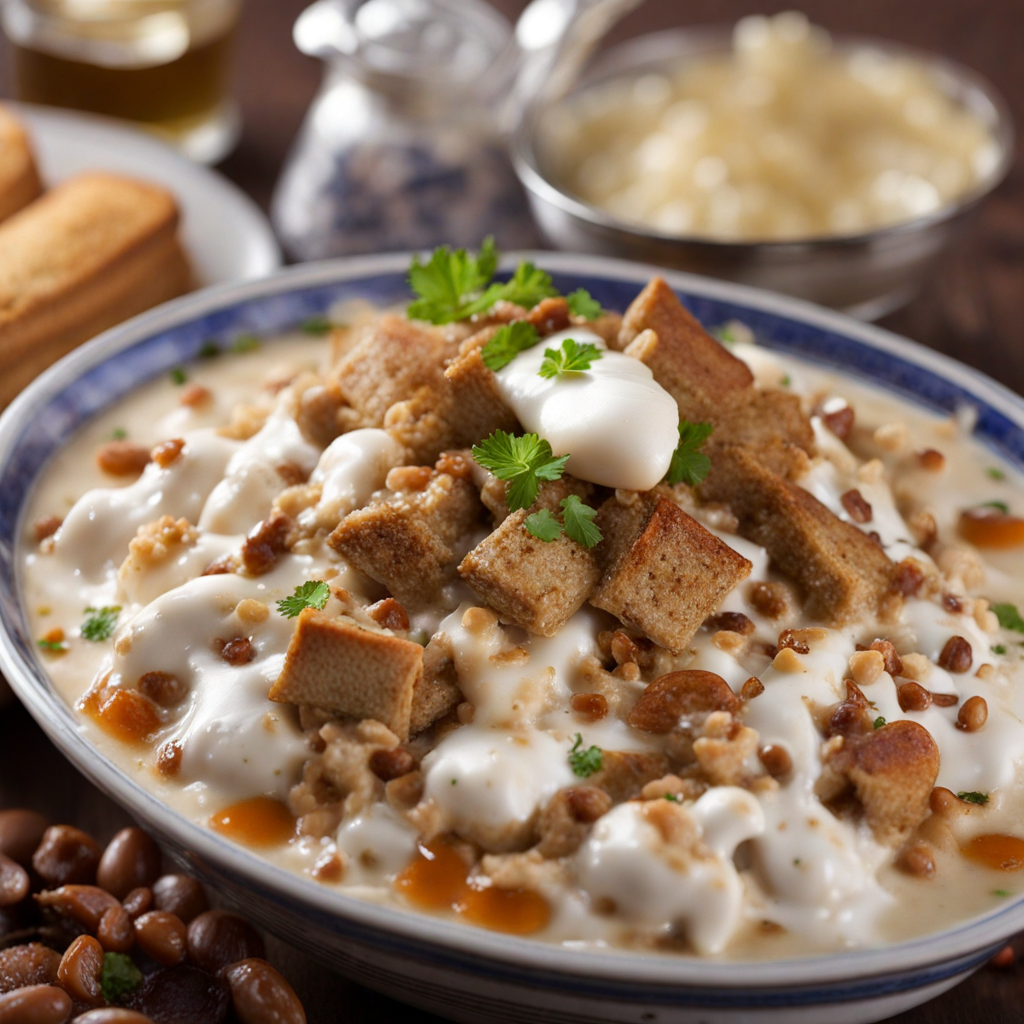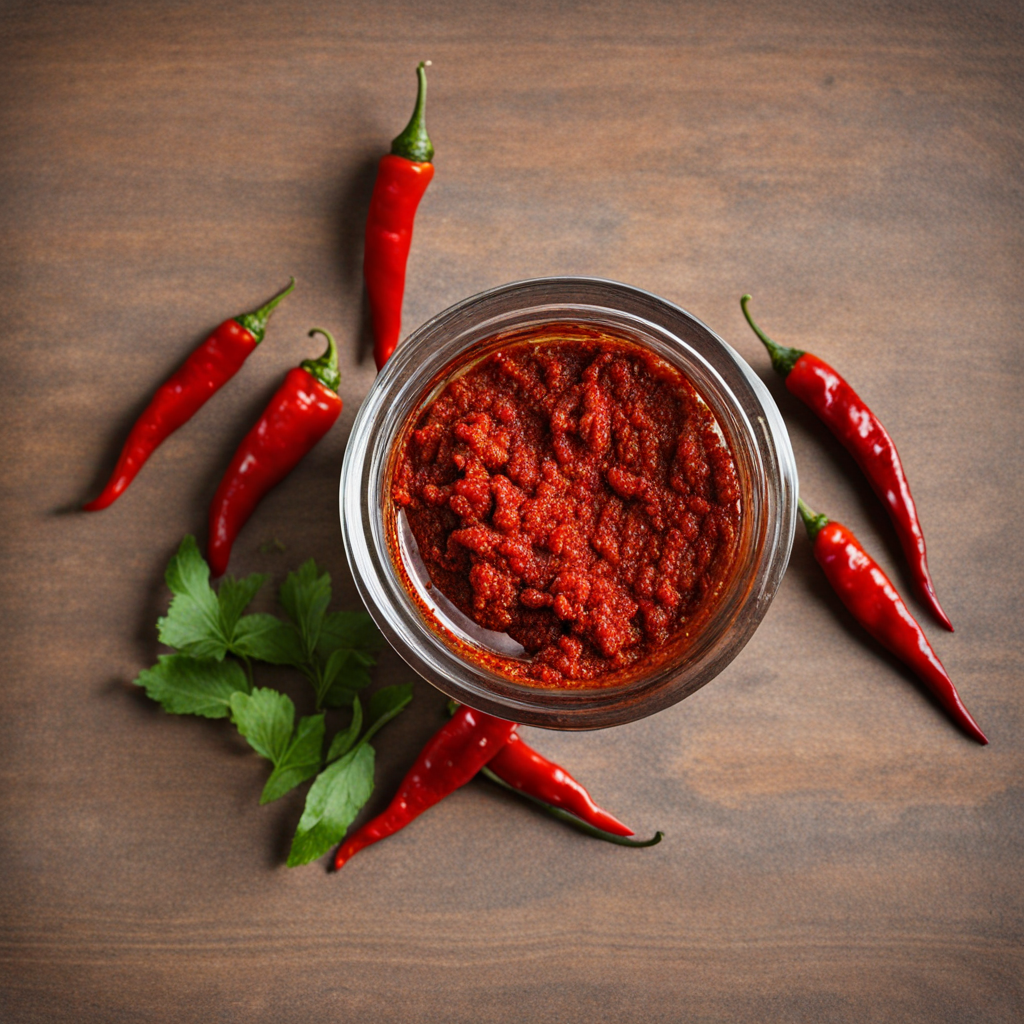Lablabi
Lablabi is a traditional Libyan dish, often regarded as a comfort food and a popular street food choice throughout the country. This flavorful chickpea soup has a rich history, deeply rooted in the culinary traditions of North Africa. The origins of lablabi can be traced back to ancient times when the region's inhabitants relied on legumes for sustenance. Chickpeas, along with other legumes, became staples due to their nutritional value and ability to thrive in the arid climate of Libya. Over the centuries, lablabi evolved, reflecting the influence of various cultures and the availability of local ingredients. The flavor profile of lablabi is robust and hearty, embodying the essence of traditional Libyan cuisine. The base of the dish consists primarily of chickpeas, which lend a creamy texture and earthy flavor. The soup is typically seasoned with a combination of spices, including cumin, coriander, and sometimes chili powder, which impart warmth and depth. The addition of garlic and lemon juice enhances the dish, providing a delightful contrast to the richness of the chickpeas. The interplay of spices and acidity creates a balanced and comforting bowl of soup, making it ideal for both casual meals and special occasions. Preparation of lablabi is straightforward yet requires patience, as the chickpeas need to be soaked and cooked properly for optimal texture. To make lablabi, dried chickpeas are first soaked overnight, allowing them to soften. After draining, the chickpeas are simmered in water until tender. In a separate
How It Became This Dish
Origin of لبلابي لبلابي (Lablabi) is a traditional Libyan dish that has its roots deeply embedded in the country’s history and culture. The origin of Lablabi can be traced back to the Berber tribes who inhabited the region long before the arrival of Arab influences in the 7th century. The dish is primarily made from chickpeas, which were one of the earliest cultivated legumes in the Mediterranean basin. The use of chickpeas in Libyan cuisine reflects the agricultural practices of the Berber people, who relied on hardy crops that could thrive in arid conditions. The basic preparation of Lablabi involves boiling chickpeas until they are tender, then mashing them slightly to create a creamy texture. This simplicity underscores the dish’s origins as a humble meal for the working class, providing necessary nutrition and sustenance. Over time, variations of Lablabi emerged, incorporating local spices and ingredients that reflect the diverse culinary influences present in Libya. Cultural Significance Lablabi holds a significant place in Libyan culture, transcending mere sustenance to embody community and tradition. It is often served during communal gatherings, family meals, and even during festivals, symbolizing unity and hospitality. The dish is particularly popular during the colder winter months, as its warmth and heartiness provide comfort against the chill. In Libyan society, food is often a medium for storytelling and memory. Lablabi is frequently mentioned in folklore, where it is associated with family gatherings and generations of culinary knowledge passed down through the years. The act of preparing Lablabi is often a communal affair, with family members coming together to share their methods and secrets, thus reinforcing familial bonds and preserving cultural heritage. Development Over Time As Libya underwent various political and social changes, so too did the dish of Lablabi. In the 20th century, with the influx of urbanization and modernization, Lablabi began to evolve from a simple street food to a more sophisticated dish found in restaurants across the country. In urban areas, vendors began to offer various toppings and accompaniments, allowing for greater personalization of the dish. One of the most popular ways to enjoy Lablabi today is with a variety of garnishes, including a drizzle of olive oil, a sprinkle of cumin, and a dash of harissa, a spicy chili paste. These additions not only enhance the flavor but also reflect the diverse culinary landscape of Libya, where North African, Mediterranean, and Middle Eastern influences intermingle. Toppings may also include boiled eggs, fried bread, or even pickled vegetables, showcasing the dish's adaptability to individual tastes. Regional Variations While the core of Lablabi remains consistent throughout Libya, regional variations have emerged that highlight the local ingredients and culinary practices. For example, in coastal cities like Tripoli and Benghazi, seafood may be incorporated into the dish, providing a fresh twist that pays homage to the Mediterranean Sea. The use of local spices, such as coriander and garlic, also varies from region to region, adding unique flavor profiles that distinguish each locale's Lablabi. Additionally, each community may have its own traditional methods for preparing Lablabi. Some may prefer a thicker consistency, while others enjoy a brothier version. This variability not only enriches the dish but also reflects the diverse cultural identities within Libya, as different ethnic groups and communities contribute their flavors and traditions to this beloved staple. Modern Influences and Globalization In recent years, globalization has further influenced the evolution of Lablabi. As Libyan diaspora communities have spread across the globe, they have brought their culinary traditions with them, introducing Lablabi to new audiences. This exposure has led to a growing interest in Libyan cuisine, with Lablabi often serving as an ambassador for the country's culinary heritage. In contemporary food culture, Lablabi has been embraced by food enthusiasts and chefs alike, who experiment with fusion recipes that incorporate international flavors and techniques. This modernization of Lablabi has led to a renaissance of interest in traditional Libyan dishes, inspiring chefs to create innovative interpretations while still honoring the dish's historical roots. Conclusion The journey of لبلابي (Lablabi) from its humble beginnings to its current status as a well-loved dish is a testament to the resilience and adaptability of Libyan culture. As it continues to evolve, Lablabi remains a symbol of community, tradition, and the rich agricultural heritage of Libya. Its enduring significance in both daily life and festive occasions underscores the importance of food as a cultural touchstone, weaving together the threads of history, identity, and shared experiences among the Libyan people.
You may like
Discover local flavors from Libya







